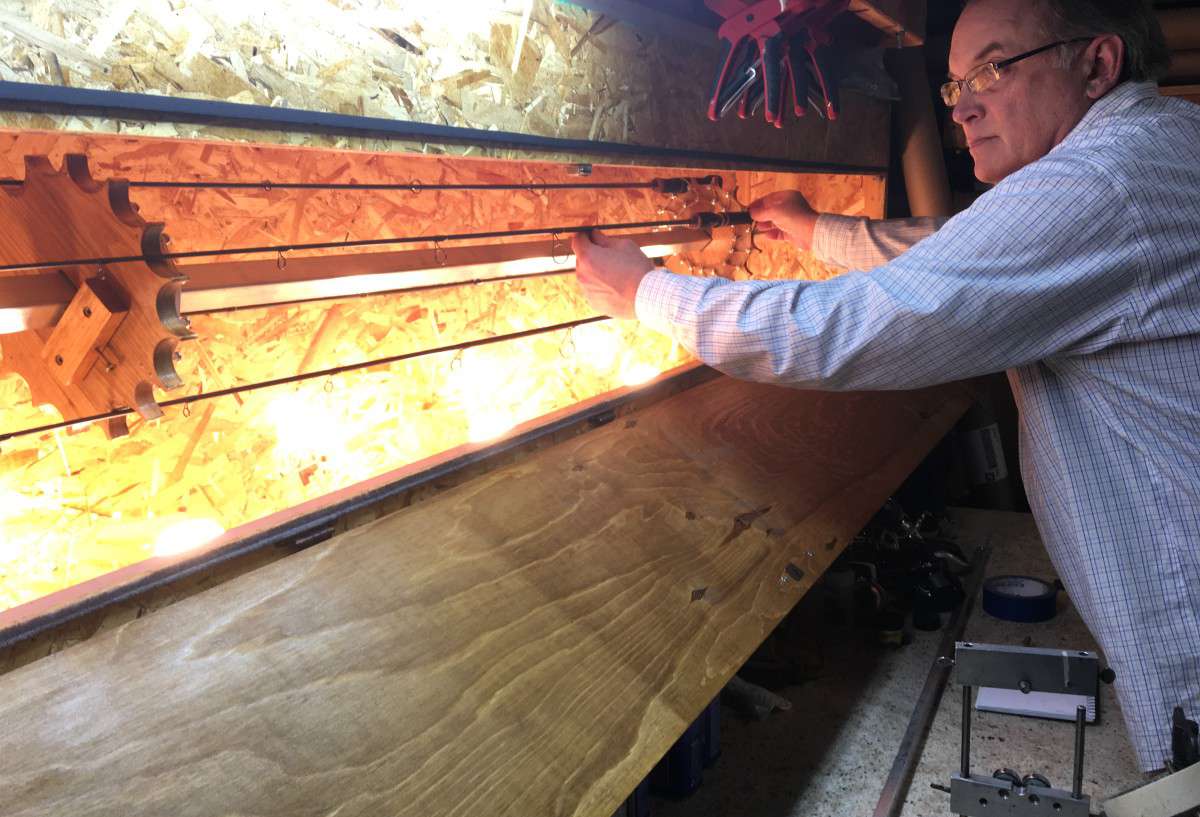
The fact is, you’d be wrong. Let me explain.
About 35 years ago, Gregg Thorne along with his brother, Paul, opened a custom fishing rod business and retail store in the suburbs of Minneapolis, Minnesota. Over time, Thorne Bros. Custom Rod & Tackle became the go-to destination for many of the finest multi-species anglers in North America. Gregg ran the rod building shop, and his innovative designs changed the fishing rod landscape forever.
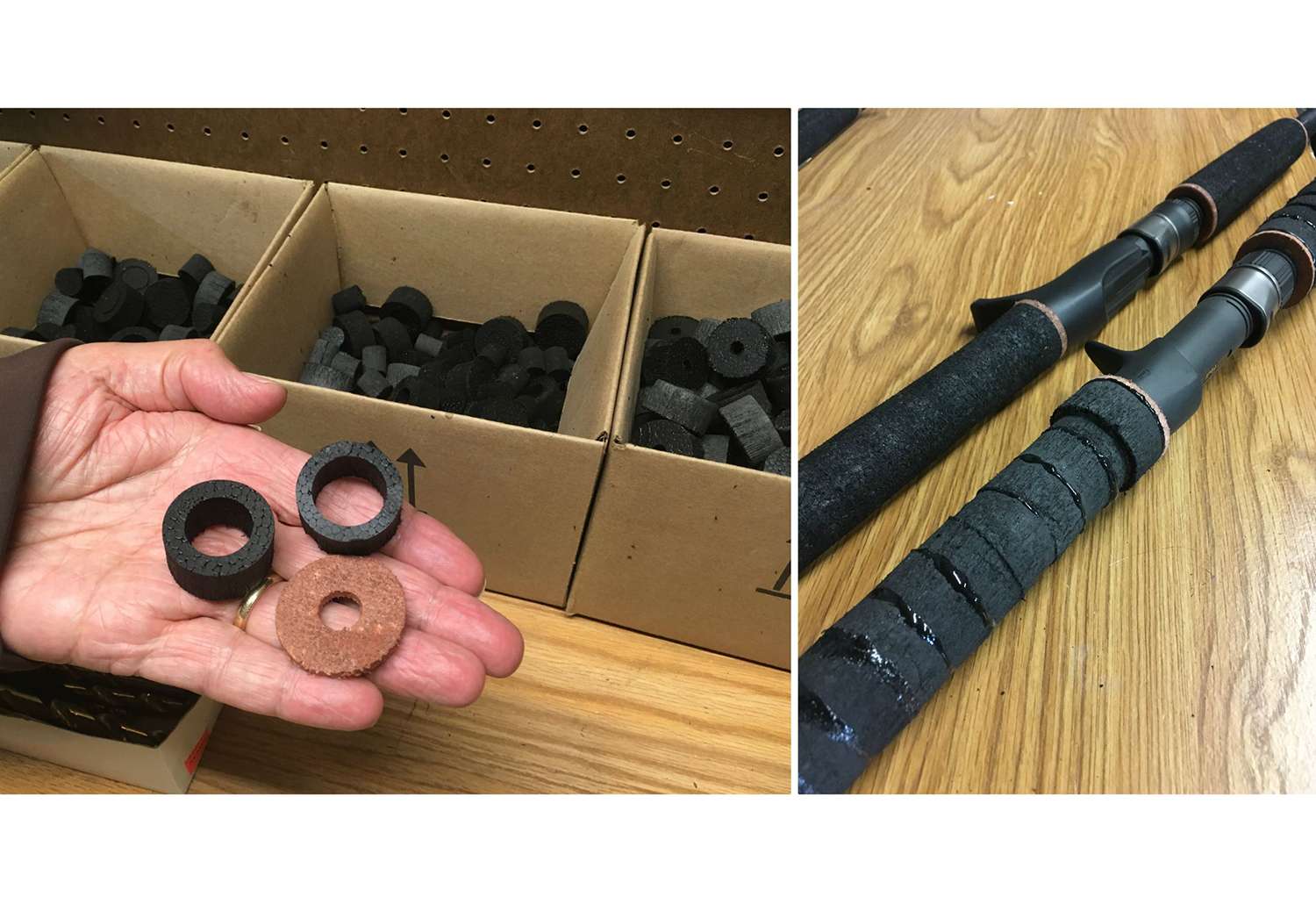
In the years since those early days (Paul and Gregg sold the Thorne Bros. store in the early 1990s), Gregg developed rods for brands such as Sage, Loomis, Cortland and Diamondback. Today, Gregg Elliott Thorne is working from a new rod building shop in the Twin Cities, and his latest creations fall under the company name Elliott Fishing Rod.
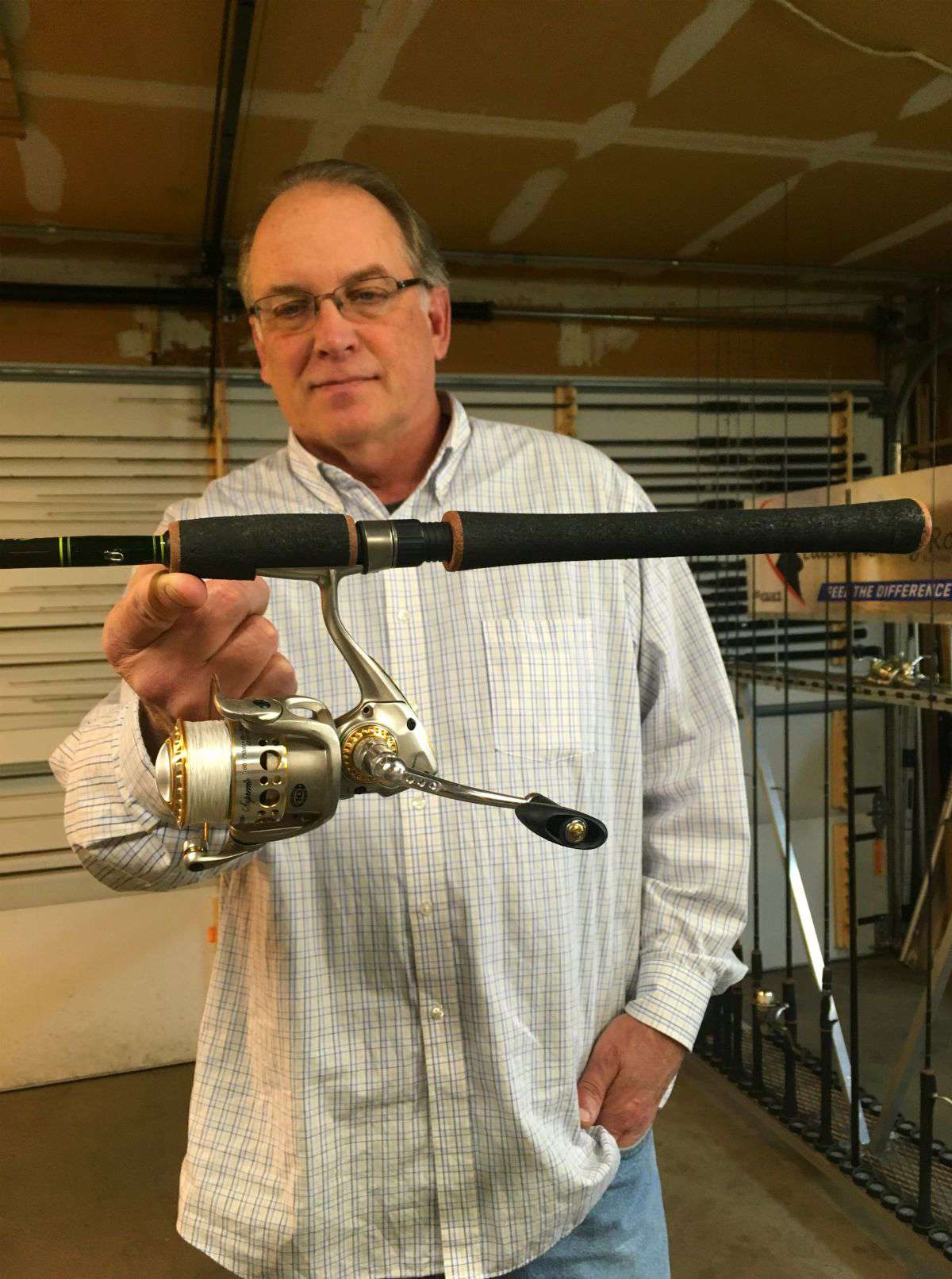
Better Handles from Syncork
To gain a better understanding of Syncork and Gregg’s new rod building company, I visited his new shop in Minnesota. It had been nearly 30 years since I’d seen Gregg in person; you see, Gregg taught me how to build custom rods in the late 1980s, and all of them are performing well to this day, except for the fact that the natural cork is deteriorating.
“Dave, check this out. This is one of my personal favorites,” Gregg said, handing me a 7-foot, medium-light-action spinning rod. “The entire handle is Syncork.”
As a user and lover of natural cork handles forever, I was amazed at how it actually felt better in the hand than cork. “Gregg, it has a wonderful textured feel. And the black looks cool, too, especially with the way you have the handle accented with a couple brown Syncork rings.”
“The truly amazing thing,” he explained, “is the feel doesn’t change when the handle is wet. And of course, your hands are going to get wet while fishing. Unlike cork, which can absorb water and become slippery, Syncork never changes. And you can’t hurt it with insect repellent, sunscreen or just about anything else.”
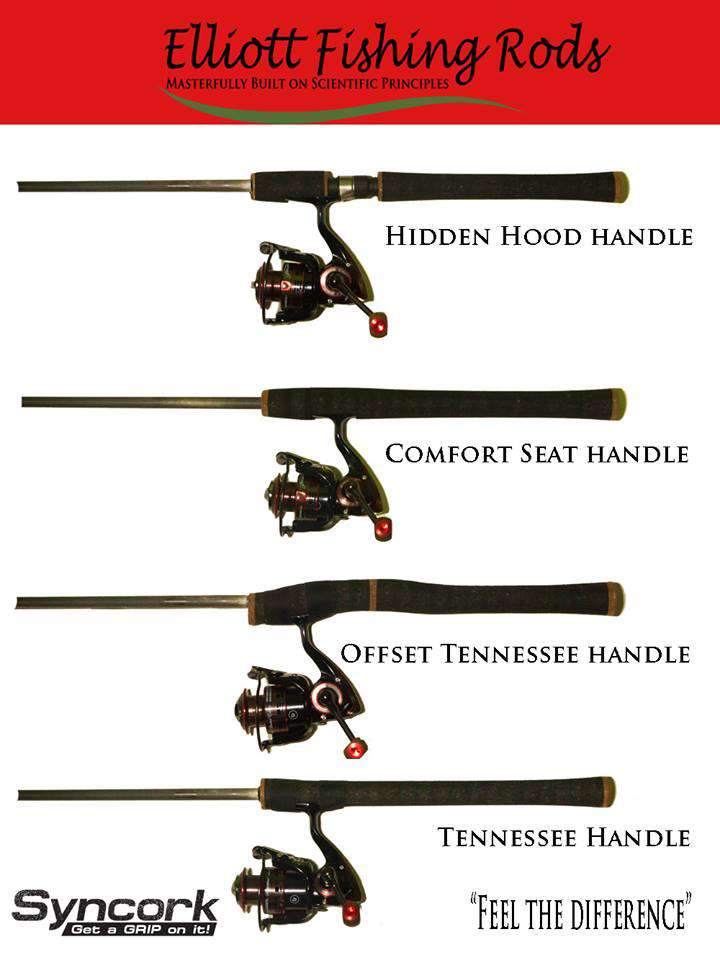
The Secret Sauce
As Gregg gave me a tour of his shop and placed several different fishing rods in my hands, I couldn’t help but feel like I’d found a golden ticket and was inside Wonka’s factory.
“Gregg, the one constant I’m feeling in these rods, no matter the length, action or handle design, is that they all feel so light. I’ve been in this industry a long time, so I’ve fished with some of the best — and most expensive — fishing rods available from the biggest names in the game. What’s your secret?”
“Let me answer that with a short story,” he said. “One time as a teenager, I was backtrolling Lindy Rigs for walleyes with my brother. Paul had an inexpensive fiberglass rod, and I had a high-dollar graphite model. We were using the exact same presentation, same reels, same line, same everything. But he was killing me in terms of detecting strikes and catching fish. It pissed me off!
So I switched rods with him after a bit, and I couldn’t believe the difference. His rod, while fiberglass, was correctly balanced, and as a result, I could feel the walking sinker, detect changes in bottom content, and react to subtle strikes. My graphite rod, however, was very tip-heavy, and because of it, I couldn’t feel a thing.
“The secret is the science of how a fishing rod is put together. That day with Paul I learned a valuable lesson for a rod builder on the key factors on how rod weight distribution and balance in the hand plays into feeling — or not feeling — everything a rod blank has to offer. It doesn’t matter how high tech or expensive the graphite is — if the rod isn’t properly balanced in the hand, then all the technology put into the blank along with the expense can be severely dampened or lost.”
Of course, rod blank weight, handle length and design, and other components (line guides, wrappings, epoxy coatings, etc.) factor into the overall weight of a fishing rod. Check out the video below where Gregg explains the importance of a rod handle as it pertains to rod balance.
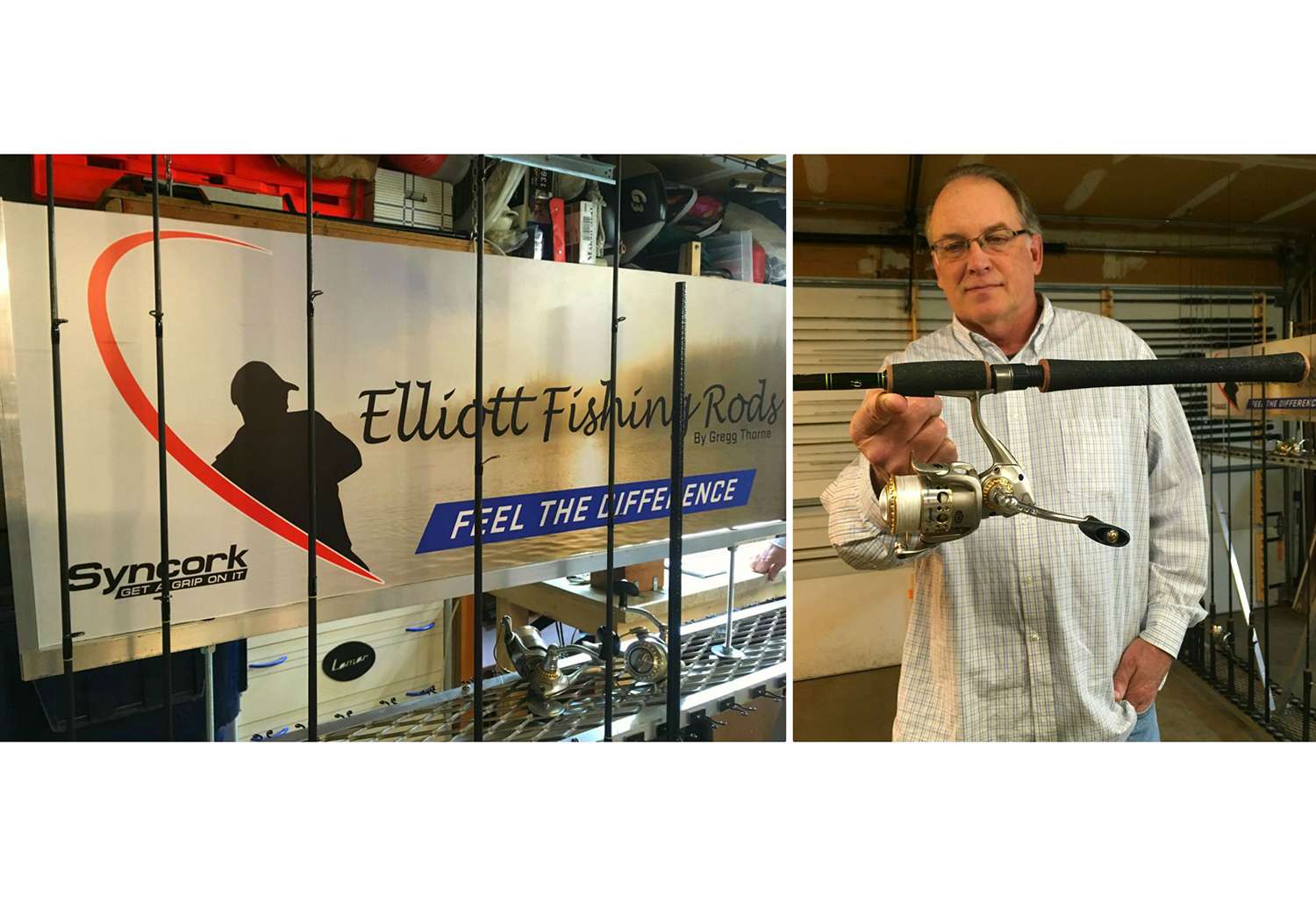
If you’re curious about rod blanks, Gregg uses his proprietary EL345 Graphite, which is a blend of 30-, 40- and 50-ton graphite materials, graphite scrims and Nano-resin technologies. Being a small company, Elliott Fishing Rods has the flexibility of offering four different spinning handle designs (Hidden Hood, Comfort Seat, Tennessee, and Offset Tennessee), as well as two options of Sea Guide line guides. And this is not a misprint: Gregg crafts every Elliott Fishing Rod handle himself.
This summer I plan to field test two of Gregg’s new creations: The 7-foot ML spinning rod I mentioned earlier, as well as a 7-foot, 6-inch heavy-action casting rod designed for bass fishing in heavy cover. (Note: This particular casting rod isn’t available on the Elliott Fishing Rod website yet, but will be added soon.)
If you’re a serious angler, consider stepping up to an Elliott Fishing Rod this season. No matter what species you pursue in freshwater, Gregg offers a rod that will maximize your enjoyment on the water.
The Offset Tennessee Grip
